|
||||||||||
|
EDITORIALNo. 22, June 2010The Heritage of Shanghai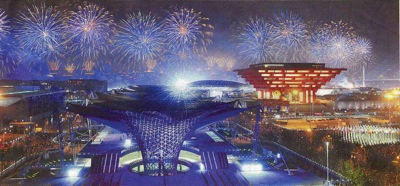 Fig.1 Fireworks at the Opening Ceremony of 2010 Expo Shanghai, 30 April 2010.
The advent of the ‘2010 Expo Shanghai China’, which opened on 1 May and continues until 30 October, has rivaled the 2008 Beijing Olympics as an event designed for national display and the celebration of Chinese acumen in everything from industry to culture. In this issue of China Heritage Quarterly we consider the heritage both of the obloquy suffered and the reputation enjoyed by Shanghai in the context of the official exuberance of the 2010 Expo. The historian Xu Jilin meditates in Features on the abortive renaissance of Shanghai culture in recent years, while the Republican era writers Lin Yutang and Zhou Zuoren offer views of the shocking delights and sober realities of Old Shanghai, many aspects of which many would argue find a ready home in New Shanghai. In his study of Sinmay Zau the Shanghai sojourner Jonathan Hutt provides a unique insight into the life of one of the pre-1949 city’s cultural lions. Gloria Davies compliments this with a penetrating view through the ‘Shanghai haze’. On the sidelines of such cultural rancour Sapajou, the Russian émigré artist, created a body of work that reflects the complex realities of the Republican city. In Articles, Duncan Campbell offers our readers further insights into the traditions of Chinese books and reading, while Linda Jaivin reviews a contentious novel by Chan Koon-chung. Chan’s work offers a bleak view of an anodyne future-present while Eric Mu remarks on the historical present evoked by the popular Beijing pedagogue Yuan Tengfei. The T’ien Hsia section features the once-famous foreign resident of Shanghai, Emily Hahn. We also reprint an article by the noted architect Dayun Doon, the man who was crucial in designing Greater Shanghai, a new Chinese city to be build north of the old Foreign Concessions. This extraordinary creation, one readily overlooked by writers, curators and historians today, was a feature of the city’s ‘Nanking Decade’ that dated from the late 1920s to the end of the 1930s. Without the support of Jonathan Hutt this issue would lack the piquant insights that he offers when we approach the historical and contemporary dimensions of Shanghai. Xu Jilin has also been generous in allowing us to translate a recent essay on Shanghai culture, while the graduate scholars Li Jie and Zhang Enhua enthusiastically responded to a request to write a report on their conference ‘Red Legacies in China’, held at Harvard University in April 2010. Richard Rigby has also been kind enough to allow us to reprint his important study of the Russian émigré artist, Sapajou, and Lois Conner has again let us produce a photographic essay related to the theme of this issue. Jeremy Goldkorn of Danwei Media also gave us permission to reproduce Eric Mu’s essay on Yuan Tengfei. Here I would also acknowledge Paul Pennay for directing me to the latest developments involving the Ancestral Temple in Beijing and Stefan R. Landsberger for his permission to carry an image from his important collection of Chinese posters (see Gloria Davies on Lu Xun in Features), and to thank Misael Racines for his help scanning in pictures. I am particularly indebted to Daniel Sanderson for finding time to work on this issue during his research travels in Europe and North America. Shanghai: Harmonising HistoryGeremie R. BarméIn an essay translated for the Features section of this issue the Shanghai-based historian and writer Xu Jilin 许纪霖 remarks on the enigma of his city: while many local residents, as well as visitors (Chinese and international) expect that a city witness to a recent mercantilist renaissance should also be well on the way to becoming an exciting centre of cultural experimentation and variety. Dazzled by the commercial reputation (and possibility) of the city visitors, while finding some of the best of globalised culture there, are hard pressed to find a home-grown, or at least hybrid, cultural landscape worthy of an international megapolis. In baneful tones, Xu provides his view of the reasons for Shanghai’s ‘native’ cultural paucity. For his part, Jonathan Hutt observes of the success of the 2010 Expo Shanghai that ‘a city that scoffs at the parochial manners of their country cousins’ is now obliged ‘to serve as a glorified theme park for the seething provincial masses’ (see his ‘Sub-Urbia’, also in Features). 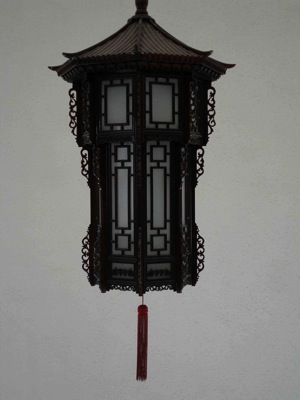 Fig.1 A Sino-Western Art Deco lamp at the Shanghai City Stadium, Wujiao Chang 五角場. The stadium was built as part of the Greater Shanghai Plan of the 1930s when a new Chinese city was designed and partially build to the north of the foreign-infested area of ‘lower Shanghai’. For an article by a prominent figure involved in the design of Greater Shanghai, see Dayu Doon’s 董大酉 essay in the T’ien Hsia section of this issue. [Photo: GRB] The quandary over contemporary Shanghai and the historical reasons for the paucity of local culture is only part of a much larger consideration of the conflicted heritages of that city.[Fig.1] While the relative relaxation of control over certain topics in the academic world has had a salutary effect, the requirements of the overculture of the party-state place new and complex strictures on understanding the past and confronting the present. Wen-hsin Yeh 葉文新, a leading US-based historian of modern China, has observed how dimensions of colonial-era Shanghai have been refashioned in recent decades, with the help of mainland-based Chinese scholars. The result has been liberating, inspiring, and also unsettling: They set aside the old-fashioned revolutionary orthodoxy and refashioned the city’s urban identity, successfully supplying the critical historical justification in favor of the city’s strategic repositioning in the 1990s. The recalibration of Chinese social and political history has had profound ramifications for the both China and the world. In this process, historians have played a key role in critical reevaluations of Shanghai’s history and the petit urbanites of the city, not just the colonialists or capitalists, are now given a role in the creation of the modern urban-centred Chinese sensibility. It is the recognition of this contribution that feeds a self-awareness of China’s contemporary middle class and what, in Australian political parlance, would be called ‘the aspirationals’, that is those who hope through dint of hard work and willpower to climb the social scale and eventually to enjoy the material prosperity that they help generate. In the concluding paragraphs of her essay for a major exhibition in San Francisco, ‘Shanghai, Art of the City’,[2] Wen-hsin Yeh indeed observes that, ‘Shanghai modernity, which in the twentieth century set the benchmark of Chinese modernity, has become, in the twenty-first century, an event in the larger story of Chinese modernity.’[3] While academics and independent writers pursue formally forbidden subjects and provide new perspectives on a past occluded by political fiat, it should also be pointed out that China’s incumbent power-holders are direct beneficiaries of much of this other praiseworthy work. 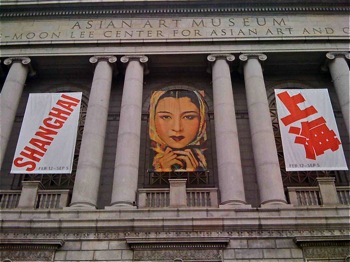 Fig.2 ‘Shanghai, Art of the City’ at The Asian Art Museum—Chong-Moon Lee Center for Asian Art and Culture, San Francisco. [Photo: GRB] New perspectives on Shanghai modernity provide valuable correctives to old Party-dominated accounts of that city, commerce and class, by the same token they also contribute to the overall attempt by the party-state to ‘harmonise history’. This enterprise began during the early years of late 1970s’ de-Maoification and it continues unabated today. Whereas early shifts away from radical ideology following the Cultural Revolution were in part related to a re-articulation of semi-socialist principles freed from Maoist dogma, an overall ‘depoliticisation’ (qu zhengzhihua 去政治化) of Chinese politics, to use Wang Hui’s 汪晖 formulation (also employed by Xu Jilin in his essay), is at work. It is through this complex process that contemporary commercial authoritarianism asserts itself to foster a retrospective account of China’s past in which class conflict, the urban-rural divide, issues over rights, power structures and so on—all previously germane to the creation of a modern China—fade into the background or are contextualized to become an non-threatening form of historical wallpaper.[Fig.2] Thus, in the harmonised narrative of modern Chinese history the much-needed correctives to revolutionary discourse provided by historians and thinkers have come to play another role. Such relatively comfortable accounts of the past—‘a bourgeois culture that is as comfortable and reassuring as a warm bath’ as Xu Jilin puts it—provide the schema for films, theatre productions, historical works, fiction, as well as major exhibitions such as the show of Shanghai-related art at The Asian Art Museum in San Francisco which is featured as part of what is promoted as ‘2010: A Year of Shanghai by the Bay’.[4] 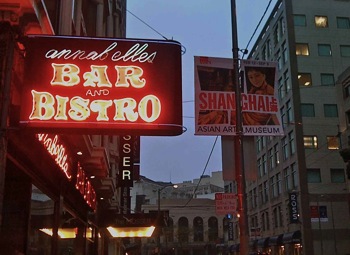 Fig.3 ‘Shanghai, Art of the City’ street-lamp poster, downtown San Francisco. [Photo: GRB] Visiting that show one is confronted by the ‘level playing field of history’ immediately.[Fig.3] The port of Shanghai was the creation of the Opium Wars, conflicts over trade between Western powers and ‘the Chinese’. This catchall expression allows for the disappearance of the Manchu-led empire, as well as of the Qing dynasty itself. Along with it goes the problematic issue of ‘China’ in its last dynastic era and the knotty problems associated with the empire’s domination by a conquest regime, the non-Western colonizing coalition of Manchu-led forces. Other questions of colonization—the foreign powers and their greedy intervention into China under the cover of military action aided and abetted by religious stealth—are also ‘harmonised’. ‘Compradors’ are now but figures busy making China part of the then global network of exchange, canny collaborators in the project of modern prosperity. The usual divisions of official Chinese historiography and its categories are also reconfigured for the convenience of this particular narrative of peaceful development. Rebellion is a mere distraction; revolution just a speed bump on the path of progress as China becomes an artful and open country. According to this happy account, too often people (scholars, writers, journalists?) have misunderstood the past. The early People’s Republic was in fact always open to international influence (the Soviet Union and the socialist fraternity) and unhelpful suggestions that there was some form of cultural sequestration or ‘closed door’ in place is dismissed by the airy narrative of the curators. Why, it is argued, Chairman Mao encouraged diversity, and wasn’t Socialist Realism an international style introduced from overseas, further evidence of socialist China’s openness? 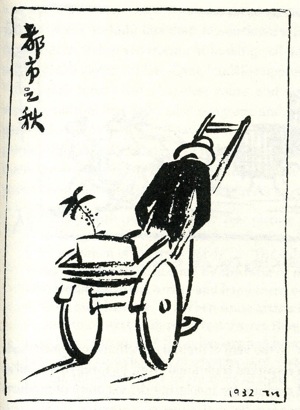 Fig.4 ‘Autumn in the City’ (Dushi zhi qiu 都市之秋), TK (Feng Zikai), 1932. The artist and writer Feng Zikai (豐子愷, 1898-1975), one of the great chroniclers of the absurd, piquant and heart-wrenching observations of Shanghai life in the 1920s and ’30s is once more press-ganged into serving the revolution of the reform era.[Fig.4] In the exhibition only one post-1949 work appears—it dates from 1959 and it is was produced to mark the tenth anniversary of the Founding of the People’s Republic at a time when the country was in the upheaval of the Great Leap Forward. Here too the official Chinese propaganda distortion—‘Three Years of Natural Disasters’ (sannian ziran zaihai 三年自然灾害)—is adopted as an ugly circumlocution for rural-scale mass murder.[5] For student of Chinese popular art history another anomaly involves Feng’s friend and fellow artist Zhang Leping 張樂平, creator of the immortal Shanghai rascal Sanmao 三毛. Here Sanmao features not as a wily denizen of Shanghai, but in his patriotic role as a child-soldier fighting the invading Japanese. However, to avoid any political unpleasantness—he is wearing a Nationalist army uniform—he is described as merely being ‘in the army’. Lu Xun 鲁迅 is mentioned in the context of his support for woodcuts and international art, but there is no sign of his brother, Zhou Zuoren 周作人, and or the stence of the ‘Shanghai Style’ (see Zhou in Features). Nor indeed does Lin Yutang 林語堂, the publisher, humorist and author of ‘A Hymn to Shanghai’ (see Features) mentioned either. The exciting and rancorous world of letters falls away, as does its impact on the vicious party-led infighting of the 1950s and 60s. As for the Cultural Revolution, there is an oil painting of Mao at Jinggang Shan 井冈山 by Yu Yunjie 俞云阶. Mao’s return to the old revolutionary base in 1965, on the eve of the Cultural Revolution, was celebrated in a famous photograph by his wife and revolutionary partner, Jiang Qing 江青. It is on this photograph that Yu Yunjie’s now-famous picture is based, although the creator of the original work has been harmonized out of the scene.[6] The issue of colonial pasts—Tianjin homogenized, Beijing’s feudal history has been domesticated. Hong Kong, which we will deal with in a future issue, has its own way of dealing with its colonial heritage. The catalogue for ‘Shanghai, Art of the City’ is an estimable publication, with excellent essays by such scholars as Wen-hsin Yeh, quoted above, and Nancy Berliner, as well as some important art work, including the Art Deco-era carpets, furniture and buildings, woodblocks from the Mao era, Shen Fan’s 申凡 tribute to Huang Binhong 黃賓虹 and Liu Huayi’s 劉華弌 monumental trees. Unfortunately, the same ‘harmonising’ (or should we call it ‘patronising’) explication of the works in the show are repeated in what will be the permanent record of an important exhibition, the catalogue. Museums, galleries, curators and art historians are regularly faced with the dilemmas of working with China’s state institutions. These are bodies that impose a particular politico-cultural scheme on the selection and exhibition of the cultural properties in their trust. Although the latitude of the Chinese state has increased in recent years in keeping with its own changed and evolving priorities, those who would collaborate with the party-state are forced to submit to complex forms of censorship and self-censorship in presenting the complex realities of China’s past and present to international audiences. The works to which we can now often have access—and they are frequently of great significance and visual power—are freighted with the cangue of their custodians. Just as audiences in the People’s Republic have had sixty years of practice in looking beyond the foggy verbiage of officialdom, we too must be equipped to look past the barriers erected to block our vision or distort our gaze. Elsewhere in this issue the anaesthetizing effect of harmony is further discussed (see Linda Jaivin’s review of Chan Koon-chung’s novel in Articles), here, perhaps, it is fitting to conclude with the words of Han Han 韩寒, the wildly popular Shanghai essayist and blogger. A Shanghai born and bred practitioner of the venerable art of the ‘acerbic essay’ (zawen 杂文), an art form brought to perfection in the 1920s and ’30s by such writers as Lu Xun, Han has developed his own way of dealing with the rulebook of the regnant harmonisers. In a recent interview he was asked how he copes with the censorship of his blog and what he thinks of it. His reply is both measured and wistful: The net editors generally tell me [something’s been deleted]. I’ll write back and say, ‘Understood’. But my essay lives on, there’s no difference between it existing on my blog or in the minds of those who have read it. I understand why they have deleted my work; it’s all a game, a dream. I don’t get too caught up in it. I’ll just write something new. If, one day, no articles are deleted [from blogs], then there will be no reason for zawen to exist any more. Of course, I’m hoping for such a day.[7] Notes:[1] Wen-hsin Yeh, ‘A Tale of Three Cities: Shanghai from 1850 to the Present’, in Michael Knight and Dany Chan, eds, Shanghai, Art of the City, San Francisco: The Asian Art Museum—Chong-Moon Lee Center for Asian Art and Culture, 2010, pp.21-22. [2] ‘Shanghai, Art of the City’, 12 February-5 September 2010, at The Asian Art Museum in San Francisco. See: http://www.asianart.org/shanghai.htm. [3] Shanghai, Art of the City, p.23. [4] ‘2010: A Year of Shanghai by the Bay’, see: http://www.shanghaicelebration.com. [5] See Shanghai, Art of the City, p.174, Plate 87. In the explanatory panel text Feng Zikai is presented as having studied and been inspired by Japanese manga or comics when he lived in Tokyo in the 1920s (p.174), something that is a proven nonsense (see the chapter on manhua in my An Artistic Exile, a life of Feng Zikai (1898-1975), Berkeley: University of California Press, 2002. [6] Shanghai, Art of the City, p.172, Plate 84. [7] Yang Meiju 杨梅菊, ‘Han Han: I’m a beneficiary of the telling the truth’ (Han Han: Wo shi shuo zhenhuade jide liyizhe 韩寒:我是说真话的既得利益者), International Herald Leader (Guoji Xianqu Daobao 国际先驱导报), 4-10 June 2010, p.11. |